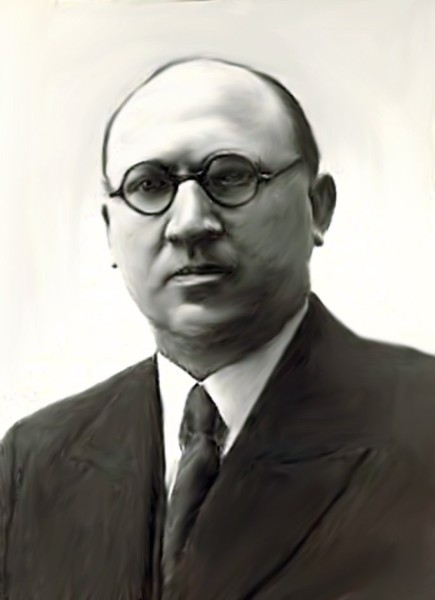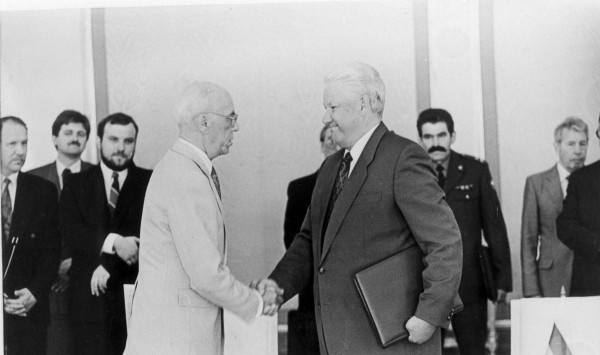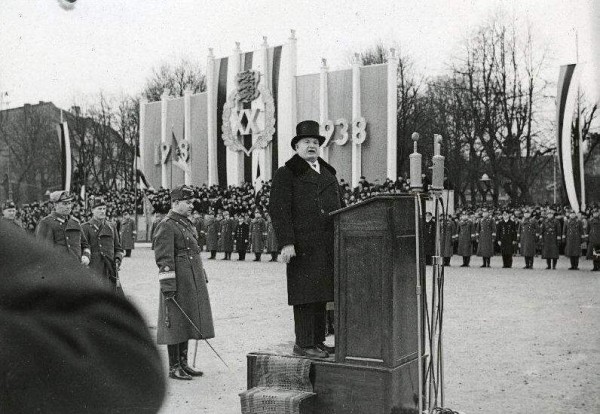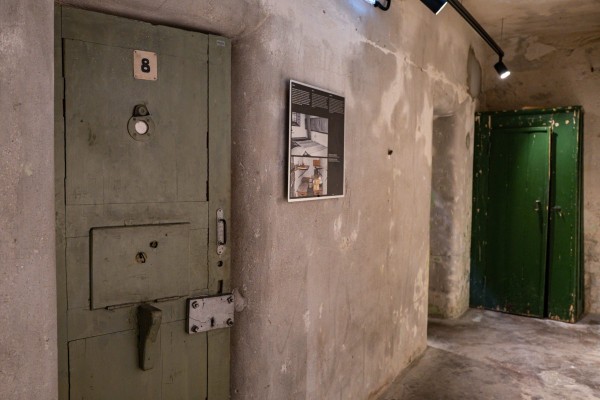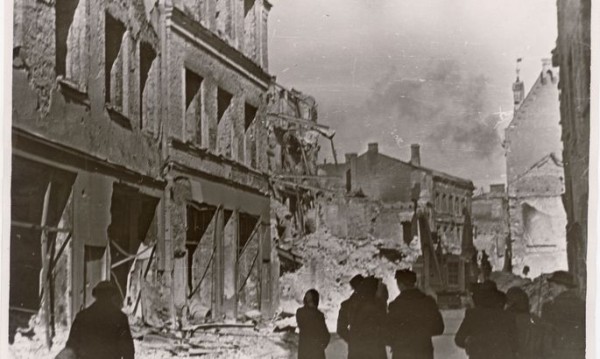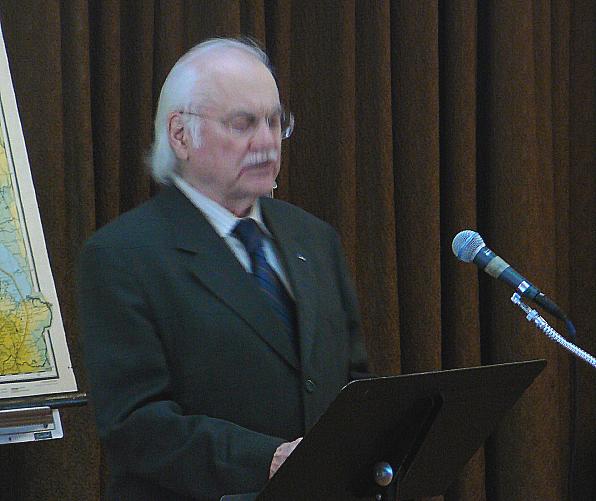
The writer giving an oral presentation in Vancouver with a little help from his friends - a map, a guitar and a microphone. Photo: Arvo Marits.
The Great Escape from Eesti in 1944 can be characterized and felt from diverse perspectives. We are aware that personal recollections abound in the thousands. There are many gripping stories about families and desperate groups of people suddenly heading westward by land and sea, the Western Sea, as the Estonians call it. But what are the stimuli, the channels that revitalize the past in the present?
The Escape can be felt by way of a single song. There’s one whereby the words and melody about leaving Eesti just grab your heart and won’t let go. It’s called “Kodumuld”. An English version might be called “A Handful of Earth from Home”. It has brought tears to many an eye and for some, the words and melodic phrases have made it emotionally challenging to sing.
Composed during the early years of exile by Paul Tammeveski and set to deeply personal lyrics by Ilmar Rebane, the song has been around for almost 70 years. When invited recently by Vancouver Estonians to address an audience at “Meie Kodu” (church and community centre), I decided to integrate ,,Kodumuld” with my childhood Great Escape story.
Another channel for perceiving the Escape is geographic memory as the route and points of departure become fixed in one’s mind. This visual recollection contributed to the importance placed on maps of Eesti printed in exile. In my description of our family’s escape I naturally used a large old school map which enabled me to point to five different ports and harbours on the mainland and the islands that were part of our family’s escape path. While looking for a wall-map of a reasonable size, I found that the Vancouver Estonian centre had at least four of them. (Pikemalt Eesti Elu 10. okt. paberlehes)
Advertisement / Reklaam
Advertisement / Reklaam







